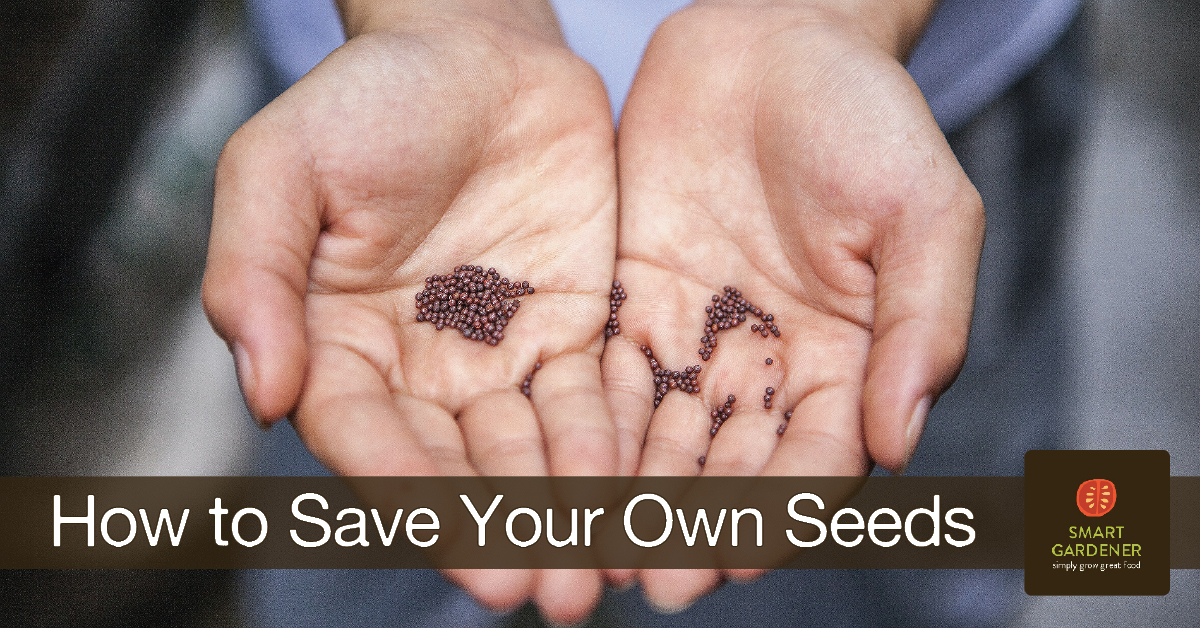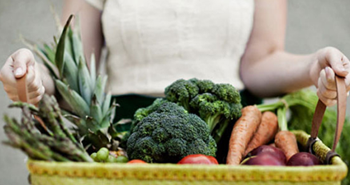Whoever came up with the phrase “there is no such thing as a free lunch” didn’t know anything about vegetable gardening or saving your own seeds. You very definitely can get a free lunch in the garden. I’m not talking about the obvious free lunch you get when you eat some of the food you have grown, but rather the free seeds your garden can produce for you.
The fact that the garden can actually produce its own seed is an amazing demonstration of how living things are very different from inanimate objects. You don’t even have to do anything to make this happen. Just let nature take its course and one seed can create dozens, hundreds, or even thousands more. When you start saving your own seeds you finish the growing season with far more seed than you started it with.
Why Save Seeds?
 Seed saving sounds fairly esoteric and mentioning it can be a useful way to one-up other gardeners at parties. But in reality it is so simple that the mystique is totally unjustified. Plants are programmed to make reproduction their highest priority. All you have to do is give them the opportunity.
Seed saving sounds fairly esoteric and mentioning it can be a useful way to one-up other gardeners at parties. But in reality it is so simple that the mystique is totally unjustified. Plants are programmed to make reproduction their highest priority. All you have to do is give them the opportunity.
Saving your own seed can save you money because it reduces the need to buy it every year. Of course, for me this advantage is more theoretical than real. I find it impossible to read through a good seed catalog without buying a whole range of new varieties. I still buy lots of seed, but the purchase is now a one-time deal, because if I like it I can save my own.
Self-Pollinated or Cross-Pollinated
The most important aspect of saving seed is maintaining the purity of the variety. To do this you need to know whether a plant can self-pollinate, or must be cross-pollinated from plant.
The difference it an important one. The seed from self-pollinated plants will be the same variety as their parents. Seed from cross-pollinated plants will be a mix of both parents and can potentially be a completely new variety. To maintain the purity of a cross-pollinated variety you need to ensure it is pollinated by another plant of the same variety.
 The best plants for saving your own seeds are the self-pollinating fruit producers (tomatoes, eggplants, peppers). For these, all you have to do is scoop out the ripe seed before you eat them.
The best plants for saving your own seeds are the self-pollinating fruit producers (tomatoes, eggplants, peppers). For these, all you have to do is scoop out the ripe seed before you eat them.
Beans, peas, and lettuce are also mostly self-pollinating, making them good plants for beginner seed-savers.
The cross-pollinated crops include all of the Brassicas (broccoli, cauliflower, cabbage, etc.) as well as squash, cucumbers, melons and corn. Saving seed from these is trickier because they need to receive pollen from another plant of the same variety. If this is from a different variety, say from your neighbor’s garden, then they will lose the special characteristics of the variety. For these plants, you will need to know the specific type of plant you want to save seeds from.
Know Your Plant Type
Once you know a plant is cross-pollinated, then you should make sure you know exactly which plant you are growing. By knowing both the genus and species names, you will know what other plants in your garden (or your neighbor’s garden) can contaminate your seed purity.
Plants from the same species can cross-pollinate each other, even if they’re very different plants. For example, all Brassica oleracea plants can pollinate each other, even though a broccoli appears to be very different from a cabbage. Fortunately, each plant in the Smart Gardener database has the genus and species listed, so it’s very easy to check!
The easiest way to prevent cross-pollination is to have only one species and variety flowering at one time. If that’s not possible, you could also try hand-pollinating to control the parentage of your seeds.
There are methods of isolation that you can employ to protect against cross-pollination from a different variety. Draping netting over the entire plant, or securing bags over the flowers, will prevent pollinators from bringing in rogue pollen.
F1 Hybrid Plants
 It’s also important to know whether your plant is a F1 hybrid. Hybrid seeds are popular in large-scale agriculture because they produce reliably similar fruit that mature at the same time, making it easier for machine harvesting.
It’s also important to know whether your plant is a F1 hybrid. Hybrid seeds are popular in large-scale agriculture because they produce reliably similar fruit that mature at the same time, making it easier for machine harvesting.
For homegardeners interested in saving their own seeds, it’s best to avoid F1 hybrid seed because the offspring won’t be the same as the parent. (This may include seeds saved from produce from the grocery store.)
Sharing your seeds
I have been routinely collecting seed for so many years that it has become just another part of vegetable gardening. As a result I now have boxes stuffed with envelopes full of seed. This brings up the problem of what to do with it all, as it only has a limited lifespan. I give some of it away and use some of it to grow sprouts and microgreens.
If you have learned how to keep your varieties pure you can start to trade seed with other gardeners (personally, or through organizations such as the Seed Savers Exchange).
This opens up a whole new avenue of gardening and allows you to participate in preserving the genetic diversity of our food crops, a very important mission. The ultimate in seed saving is actually breeding your own varieties, though I haven’t got to that yet.


